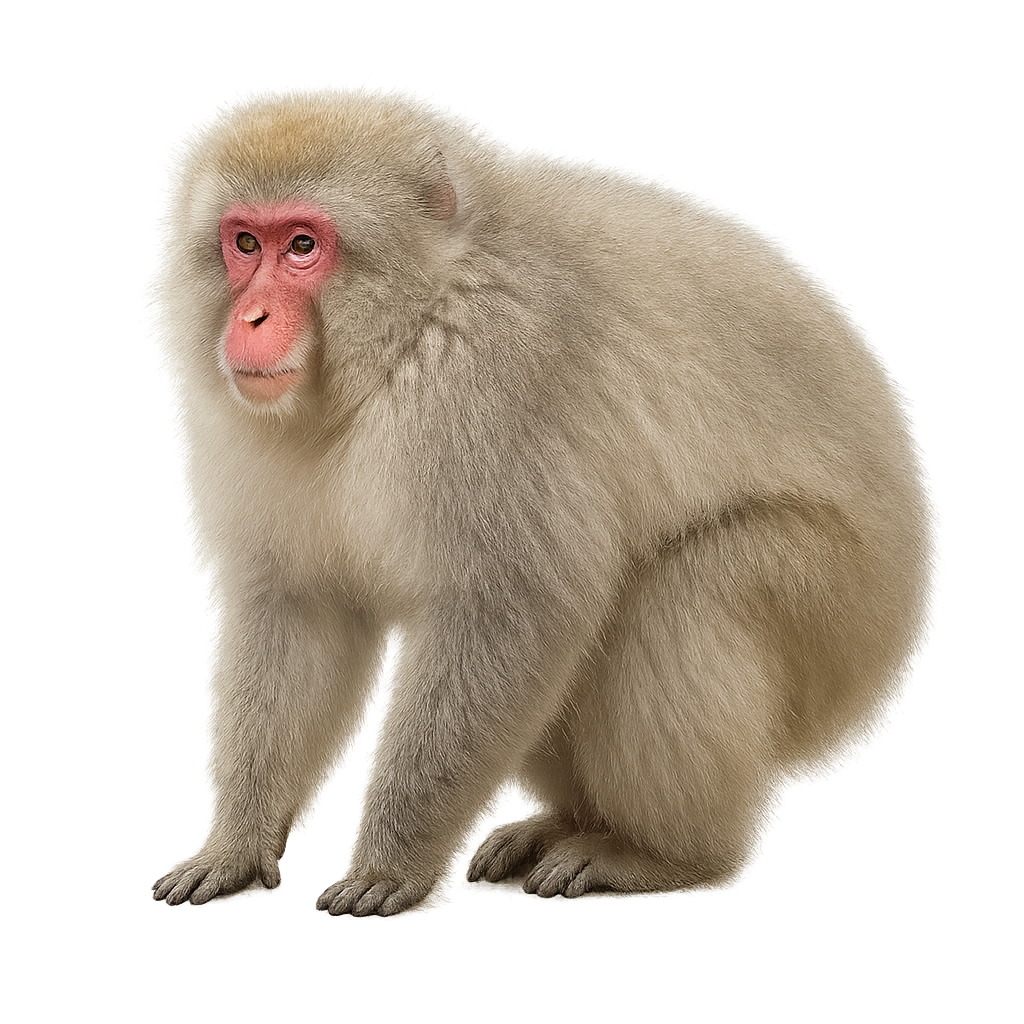Your wildlife photography guide.
Explore the japanese macaque in detail, study its behavior, prepare your shots.
Where to observe and photograph the japanese macaque in the wild
Learn where and when to spot the japanese macaque in the wild, how to identify the species based on distinctive features, and what natural environments it inhabits. The WildlifePhotographer app offers tailored photography tips that reflect the japanese macaque’s behavior, helping you capture better wildlife images. Explore the full species profile for key information including description, habitat, active periods, and approach techniques.
Japanese macaque
Scientific name: Macaca fuscata

IUCN Status: Least Concern
Family: CERCOPITHECIDAE
Group: Mammals
Sensitivity to human approach: Suspicious
Minimum approach distance: 20 m
Rut period: October to November
Gestation: 170-180 jours
Births: March to April
Habitat:
Mountain forests, temperate and cold regions of Japan, often near hot springs
Activity period :
Primarily active during the day, with peak activity in the morning and late afternoon.
Identification and description:
The Snow Monkey, also known as the Japanese macaque, is a species of primate primarily found in the mountains and snowy regions of Japan. It measures about 50 to 60 cm in length, with a tail of 20 to 25 cm, and weighs between 10 and 14 kg. Its fur is dense and thick, typically brown or gray, with a reddish face that becomes more pronounced in males, especially during the breeding season. The Snow Monkey lives in complex social groups and is especially known for its social behaviors, notably bathing in hot springs during the winter, which has become one of the most iconic images of Japan. It primarily feeds on fruits, roots, seeds, and sometimes small animals. While its population remains relatively stable, this species sometimes faces habitat loss and conflicts with human populations.
Recommended lens:
200 mm – adjust based on distance, desired framing (portrait or habitat), and approach conditions.
Photography tips:
To photograph the snow monkey, a telephoto lens is ideal for capturing their social interactions and unique behaviors, especially when they are bathing in hot springs. The soft light of morning or evening is perfect to avoid harsh shadows and to photograph these animals when they are active at dawn or dusk. Be discreet and respect their space to avoid disturbing their routine.
The WildlifePhotographer App is coming soon!
Be the first to explore the best nature spots, track rutting seasons, log your observations, and observe more wildlife.
Already 1 431 wildlife lovers subscribed worldwide

